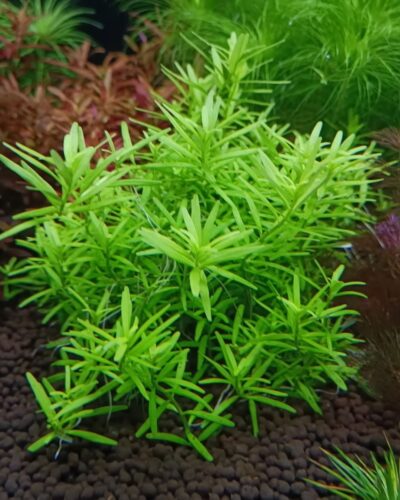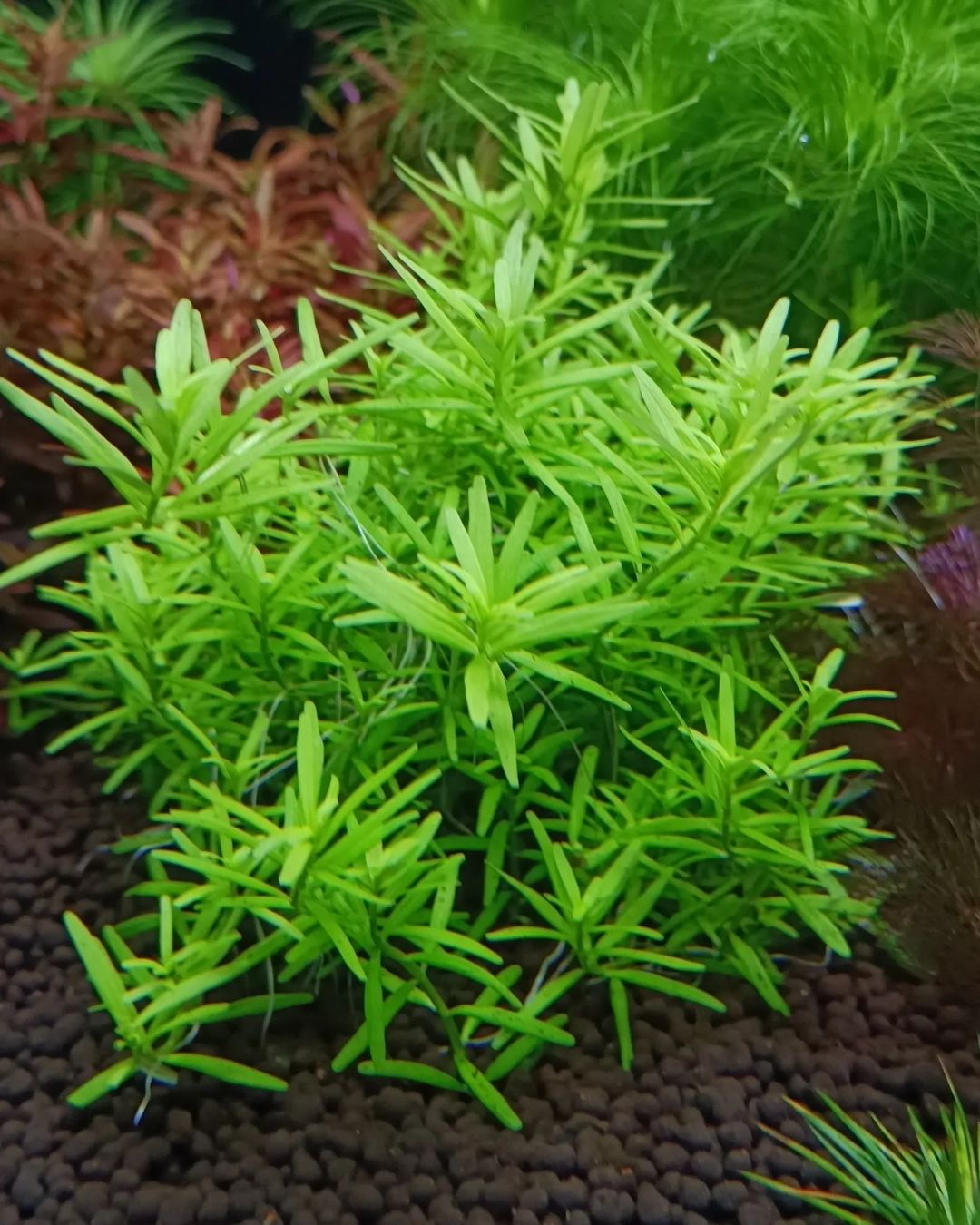Rotala rotundifolia can make any aquarium or water garden more beautiful with its narrow leaves. It can be grown easily with the least care.
Rotala rotundifolia, often called the aquatic Rotala plant, is a popular choice for aquariums due to its small, rounded leaves and appealing look. This plant is prized for its ease of growth, vibrant colors, and the unique texture it brings to aquarium setups. Continue reading to discover how to grow Rotala successfully in your aquarium.
Roundleaf Toothcup

Aquatic Rotala is native to Southeast Asia; it thrives in riverbanks, swamps, the edges of rice paddies, and other moist environments. In aquariums, these plants can adapt to almost any size, and they look best when planted in small clusters. Keep in mind that their soft, delicate stems are vulnerable to damage from larger or more active fish. This versatile plant is also known by other names, including roundleaf toothcup, dwarf Rotala, pink Rotala, or pink baby tears.
This aquatic plant has bright, green, narrow leaves with a round or pointed edge on multiple stems. It appears in bunches, generally in green hue, but may turn red or pink with time or variety.
In aquariums, Rotala grows quickly, especially when exposed to bright light and given supplemental CO2. When it reaches the surface of water, the plant often bends back down, forming a lush, cascading effect.
FACT: The Latin name of Rotala implies “the plant with the round leaves”; however, the plant produces narrow foliage.
Propagating Roundleaf Toothcup
Propagating Rotala is a simple process, making it easy to expand your collection or share with fellow aquarium enthusiasts. To propagate, cut a 4-inch (10 cm) section of stem, remove the lower leaves, and plant it in the aquarium substrate. Roots will sprout quickly, helping the new plant establish itself in no time.
Aquarium Size: An aquarium of at least 10 gallons is advised for this aquatic plant, as smaller tanks may lead to overcrowding. Keep in mind that deeper aquariums need more intense lighting to ensure that enough light reaches the plants for photosynthesis.
Ideal Growing Conditions for Rotala Rotundifolia
Light
The color of Rotala can range from light green to red, depending on the brightness and intensity of the light it receives. Bright light enhances the colors and overall appeal of the rotala. If the plant is kept in too much shade, it may grow long and lanky with a greenish-yellow hue.
Rotala rotundifolia can adapt to low or moderate lighting, but it truly flourishes with full-spectrum lighting, ideally with a color temperature around 6500K. To ensure optimal growth and health, provide at least eight to ten hours of light each day.
Soil
Plant Rotala in aquariums using a standard substrate like small gravel or sand.
To help your Rotala rotundifolia thrive, use a nutrient-rich substrate that’s at least 1.5 to 2 inches deep. This type of substrate is also suitable for a variety of other aquarium plants, allowing you to add different leafy species for greater diversity in your aquarium.
Temperature and Humidity
The ideal water temperature for aquariums with Rotala rotundifolia is between 62 and 82 degrees Fahrenheit (17-28 degrees Celsius). Be sure to check the pH regularly and maintain it between 5 and 7.2.
Rotala rotundifolia Care
Fertilizer
Using liquid fertilizer and iron supplements can boost the red coloring of Rotala rotundifolia. Additionally, maintaining nitrate levels below 5 ppm will also help bring out the plant’s red hues.
Pruning
Caring for Rotala rotundifolia is straightforward. The plant grows quickly and can be pruned to avoid overgrowth. Regular pruning is important to ensure there’s enough space between plants, as fish enjoy swimming through the dense, jungle-like growth.
Best Mates for Rotala
Your Rotala rotundifolia can coexist with various aquarium pets, including peaceful fish like tetras, platies, and rasboras. The best companions are those that won’t damage the plants but may use them as shelter. Cherry barbs and freshwater shrimp also make good tankmates for Rotala.
Prevent large cichlids and goldfish, as they might eat your plants. Decorative snails, like rabbit snails, could also munch on your Rotala rotundifolia if they’re underfed. Additionally, crayfish and crabs are risky choices since they might damage your plants.



